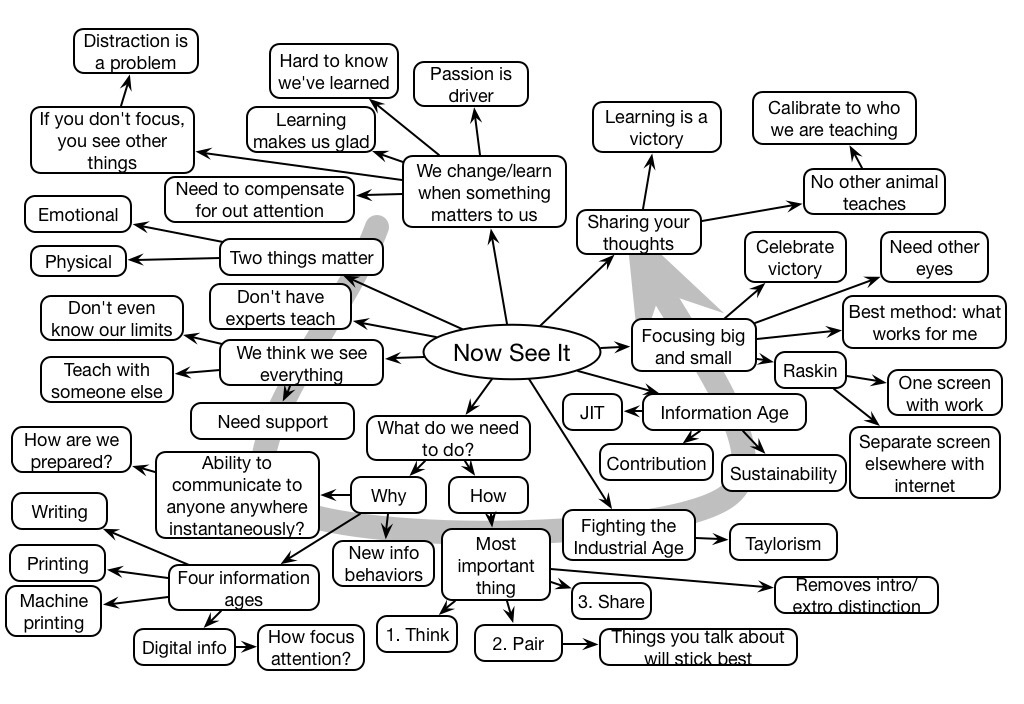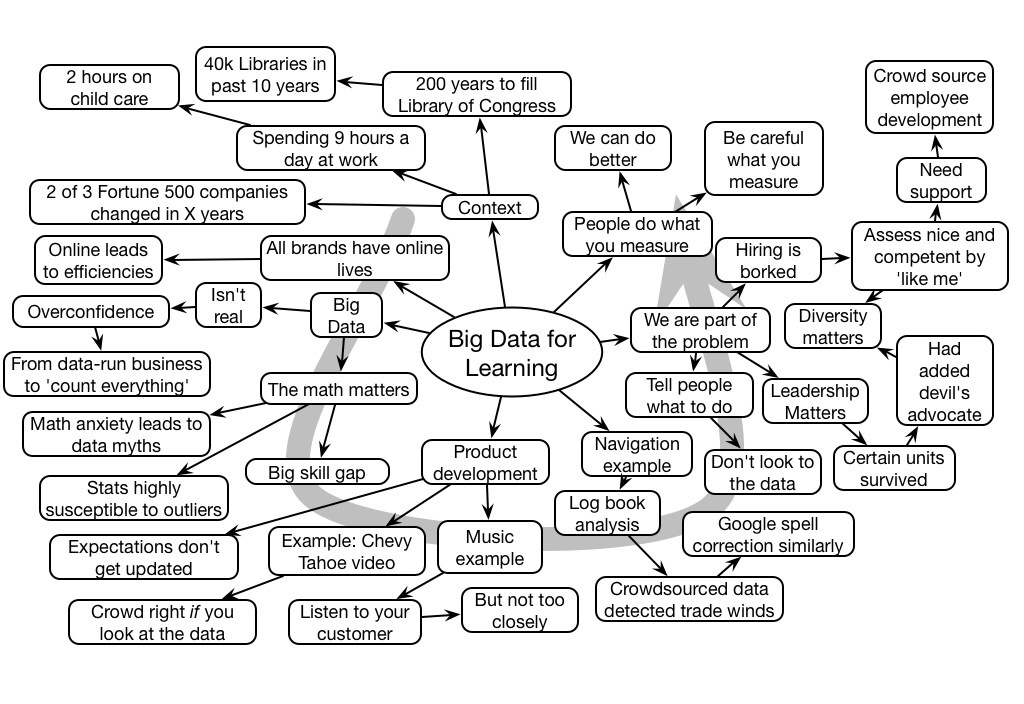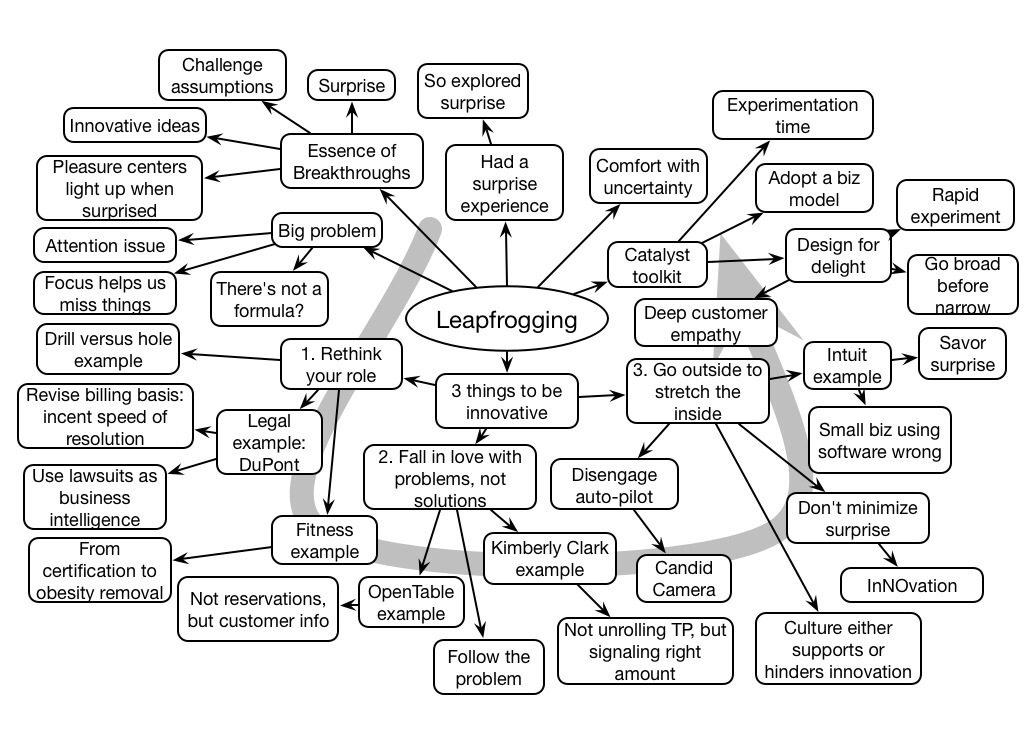In my last post, I wrote about the first step you should take to move to Serious eLearning, which was making deeper practice. Particularly under the constraints of not rocking the boat. Here I want to talk about where you go from there. There are several followup steps you should take after (hopefully) success at the beginning. My big three are: aligning with the practice, extending the practice, and evaluating what is being done.
1. So, if you took the advice to make more meaningful and applied practice within the constraints of many existing workplaces (order-taking, content dump, ‘just do it’), you next want to be creating content aligned with helping the learner succeed at the practice. Once you have those practice questions, you should trim all that material to just what they’ll need to be able to make those decisions.
This also means stripping away unnecessary content, jettisoning the nice-to-know, trimming down the prose (we overwrite). By stripping away the content, you can work in more practice and still meet the (nonsensical) criteria of time in seat. And you’ll have to fight the forces of ‘it has to be in there’, but it’s a worthy fight, and part of the education of the organization that needs to occur.
Get some war stories from your SMEs while you’re working (or fighting) with them. Those should be your examples, and guide your practice design. But if you can’t, you’ll just have to do the best you can. Make the introduction help learners see what they’ll be able to do afterwards. All this fits within the standard format, so you should be able to get away with it and still be taking a stab at improving what you’re doing.
2. The second step is to extend practice. I mean this in two ways. For one, massed practice dissipates quickly, and you want practice spaced out over time. This may be a somewhat hard sell, yet it’s really required for learning to stick. Another part of the organization’s education. You should be developing some extra content at development time for streaming out over time, but breaking up your course so that the hour of seat time is 30 or 40 mins up front, and then 20 or 30 mins of followup spread out over days and with repeated practice will make learning stick way more than not. And if it matters, you should (if it doesn’t, why bother?).
The second way to extend it is to work on the meaningfulness of your practice. Ideally, practice would be deep, simulations or at least scenarios. The situations that will most define company success are, I will suggest, in complex contexts. To deal with those, you need practice in complex contexts: serious games or at least scenarios. And don’t make them boring, exaggerate so that the practice is as motivating as the real world situation is. Ultimately, you’d like learners creating solutions to real world problems like creating business deliverables, or performing in immersive environments, not answering multiple choice questions! And extending the experience socially: whether just reflecting on the experience together, or better yet, collaborative problem solving.
3. Finally, you should start measuring what you’re doing in important ways. This, too, will require educating your organization. But you shouldn’t assume your first efforts are working. You want to start with the change in the business that needs improving (e.g. performance consulting and Kirkpatrick level 4), then figure out what performance by individuals would lead to that business change, and then develop your learning objectives and practice to get people able to do that performance. And then measure whether they can, and whether it leads to performance changes in the workplace, and ultimately changes in the business metrics. This will require working with the business units to get their data, but ultimately that’s how you become strategic.
Of course, you should be measuring your own work, and similarly if your interventions are as efficient as possible. But those should only happen after you’re having an impact. Measuring your efficiency (“our costs per seat time are at the industry average”) without knowing whether you have an impact is delusional. Are your estimates of time to accomplish accurate? Are you using resources efficiently? Are people finding your experiences to be ‘hard fun’? These matter after the question of: “are we helping the organizations needs?”
So, between the previous post and this, hopefully you have some concrete ideas about how even in the most constrained circumstances you can start improving your learning design. And the Manifesto supporting principles go into more depth on this, if you need help. So, does this provide some guidance on how to get started? Ready to sign on? And, perhaps more importantly, what further questions do you have?


